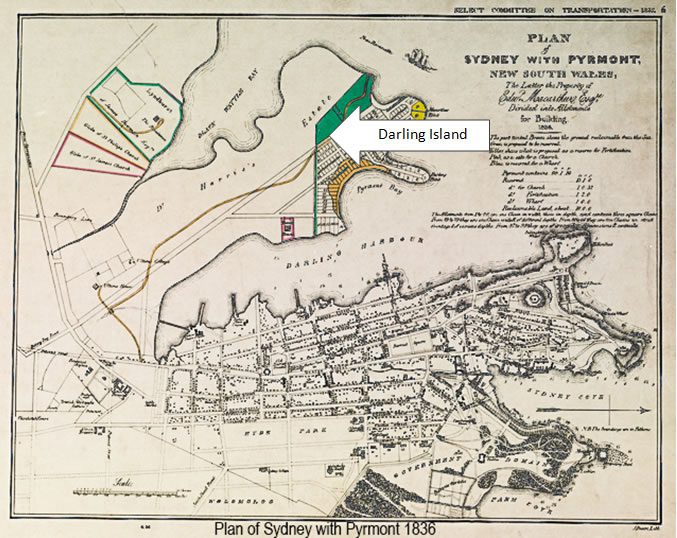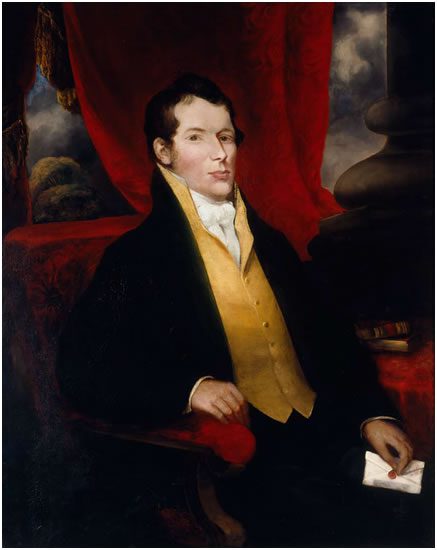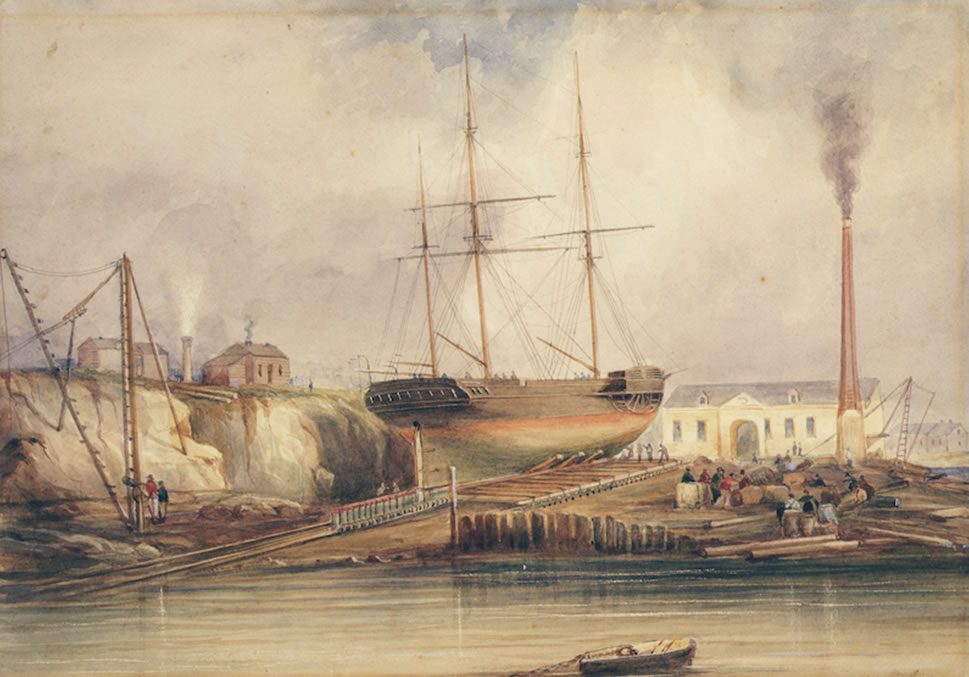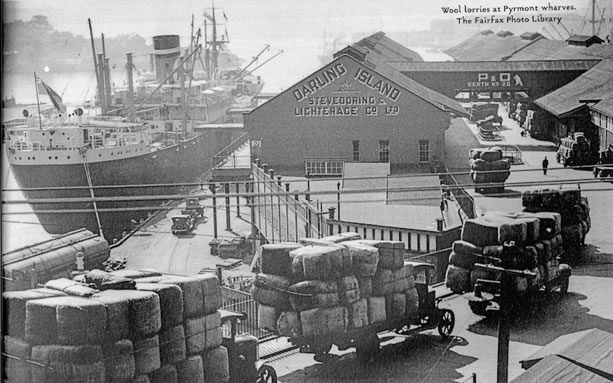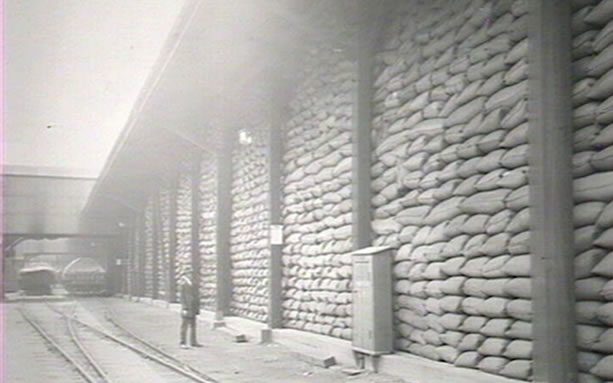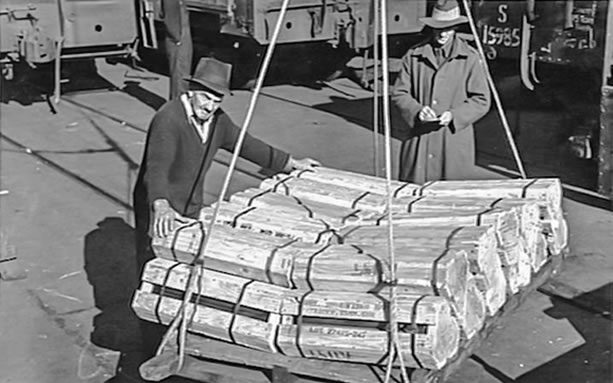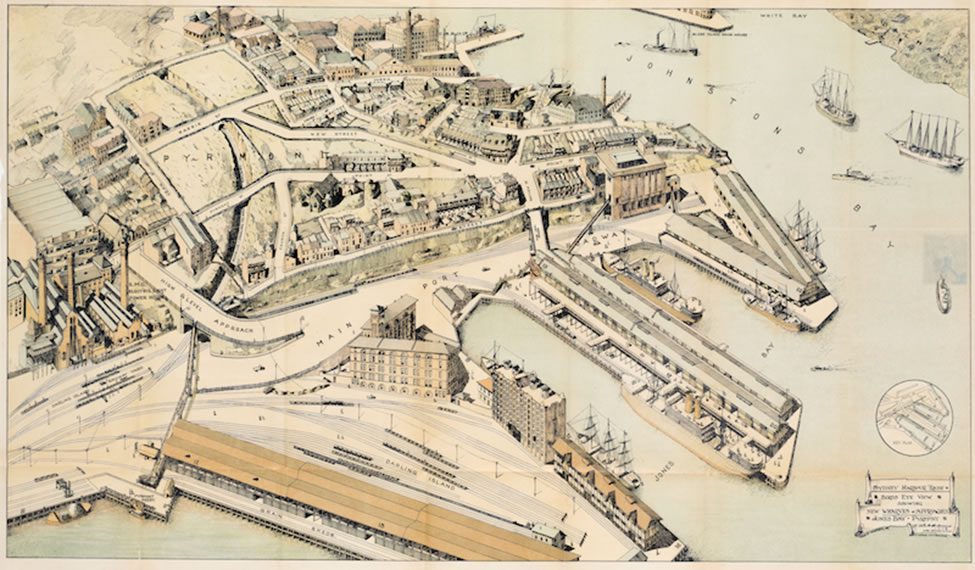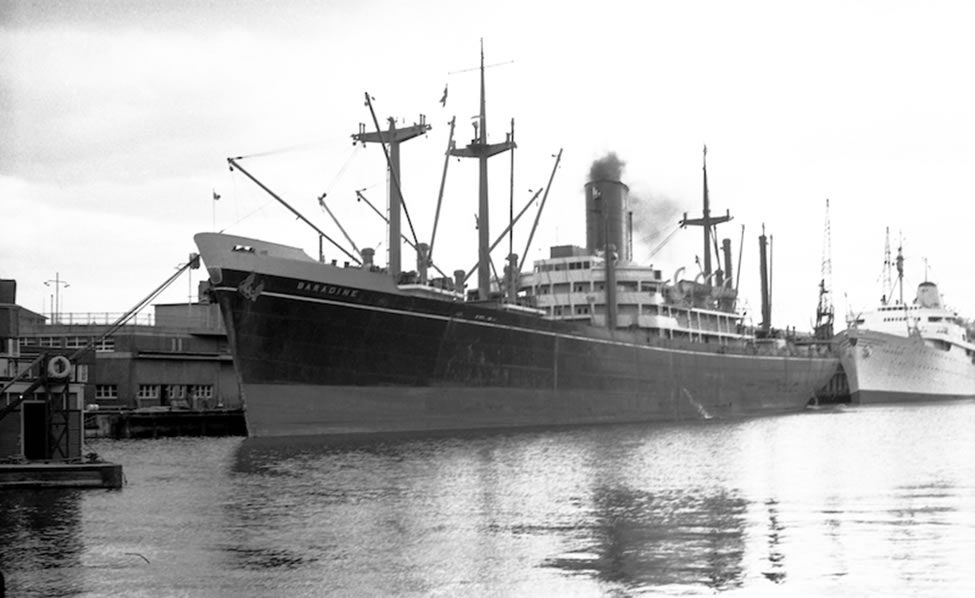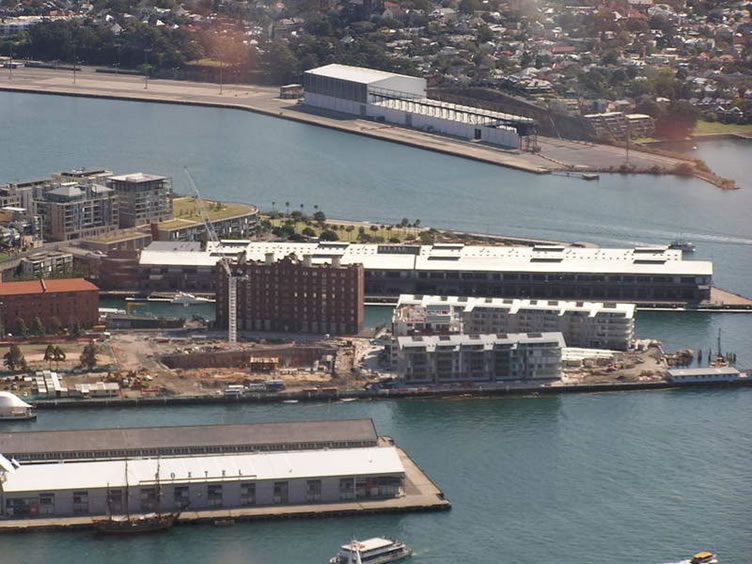DARLING ISLAND
HISTORY
Darling Island is steeped in history. The first inhabitants of Darling Island were the traditional owners, the Gadigal people of the Eora Nation. Early Europeans found so many shell-filled middens they initially named it Cockle Island.
In those times Darling Island was an oval-shaped, rocky, inhospitable island to the west of the Rocks, only accessible over mud flats at low tide. The centre of the island rose to a steep sandstone knoll heavily covered in trees and scrub.
Private Thomas Jones was a private in the NSW Corps. He is famous not only for having been the first European to own Darling Island, but for his demise at the end of a rope.
In 1795 the NSW Corps officers awarded Jones 55 acres at the North Eastern tip of Pyrmont, including Darling Island. As part of a drive by the young colony to provide food for the growing population, grants were made conditional on the new owners farming the land.
This grant -Jones’ Farm -required him to live on the land, clear and cultivate it. However, on discovering its poor potential, Jones never farmed Darling Island and instead sold the land to Sergeant Ikin, who sold it on to John Macarthur as soon as he could.
In 1799 Jones and his wife were charged with murdering a missionary, convicted, and hanged. Jones body was left hanging over the smouldering ruins of his house near George Street.
Without his knowledge he and his wife bequeathed their name to Jones Street and Jones Bay, in what was later to be known as Pyrmont. Jones Bay is on the western side of Darling Island
In 1796 the land was sold to Sergeant Obadiah Ikin of the New South Wales Corps.

